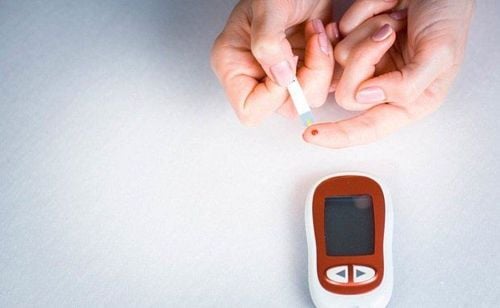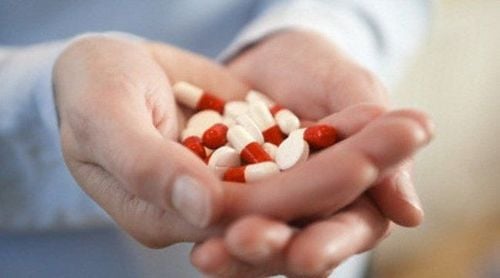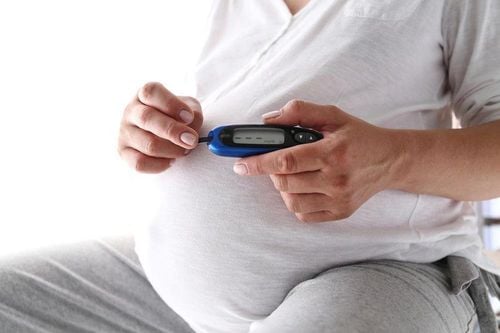This is an automatically translated article.
The article was professionally consulted with Master, Doctor Nguyen Tung Hoanh- Department of Resuscitation - Emergency - Vinmec Nha Trang International General Hospital.Type 2 diabetes is the more common type, usually seen in adults, and occurs when the body is resistant to insulin or doesn't make enough. Diabetes can lead to serious complications like heart attack, stroke, kidney failure, blindness, and nerve damage in the feet that can lead to amputation. Because this is a preventable disease, understanding the mechanism of type 2 diabetes is very important to help people prevent the disease well and effectively.
1. Pathology of type 2 diabetes
When sugar from food is taken into the body, it will be broken down to form simple sugars like glucose. After circulating in the blood, glucose is taken into the cells to be used as energy for the body to function.Insulin is a hormone secreted by the β-cells of the pancreas and is responsible for transporting glucose into cells. When blood glucose is high, the pancreas will secrete a sufficient amount of insulin to transport glucose into the cells and when blood glucose is low, the pancreas will stop secreting insulin.
In patients with type 2 diabetes, the pancreas secretes enough insulin, but the cells in the body are resistant to the effects of insulin or because the amount of glucose taken into the body is too much, the insulin secreted by the pancreas is not enough to for their transport into the cell.
As a result, blood sugar is elevated, to a certain extent it will be excreted in the urine, causing diabetes. Insulin resistance in type 2 diabetes is the result of many different pathophysiological mechanisms such as: hyperglycemia, increased non-esterified fatty acids. Recent studies have shown that insulin resistance in muscle tissue occurs very early in the development of the disease. The enzymes insuline receptor kinase and phosphatase are involved in insulin action, glucose transporter and glycogen synthesis. Dysfunction of pancreatic β-cells in type 2 diabetes includes: impaired insulin secretion, decreased insulin response to glucose, impaired rhythmic insulin secretion related to glucose concentration, abnormal Prinsuline metabolism , decrease in the number of β-cells, deposition of Amyloid in pancreatic islets. Role of insulin receptor 2 (IRS 2: Insulin Receptor Substrate 2), NF-kB, mitochondrial dysfunction, oxidative stress.
2. Causes of disease
Gene. Scientists have found different pieces of DNA that affect how your body makes insulin. Weight gain. Being overweight or obese can cause insulin resistance, especially in people with belly fat. Now, type 2 diabetes affects children and adolescents as well as adults, mainly due to childhood obesity. Metabolic syndrome. People with insulin resistance often have a cluster of other conditions that include high blood sugar, excess fat around the waist, high blood pressure, and high cholesterol and triglycerides. Eat too much sugar. When blood sugar is low, the liver makes and releases glucose into the bloodstream. After you eat, your blood sugar rises and normally the liver slows down the process of metabolizing sugar and storing glucose for later, but some people have problems with the liver. lead to a lot of sugar produced by the liver. Poor communication between cells. Sometimes cells send the wrong signal or don't receive the signal correctly. When these problems affect the way cells make and use insulin or glucose it leads to a chain reaction that can lead to diabetes.
Ăn quá nhiều đường là nguy cơ mắc tiểu đường cao hơn
3. Who is susceptible to type 2 diabetes?
Factors that can increase the risk of type 2 diabetes include:Weight. Being overweight is a major risk factor for type 2 diabetes. However, in many cases, people don't have to be overweight to develop type 2 diabetes, but people who are normal weight or underweight. It is still possible to have this disease. Fat distribution. If your body stores fat primarily in your belly, you have a higher risk of developing type 2 diabetes than if you store fat elsewhere, such as your hips and thighs. The risk of type 2 diabetes is increased for men with a waist circumference over 40 inches (101.6 cm) or women with a waist circumference greater than 35 inches (88.9 cm). Less activity. The less active you are, the higher your risk of developing type 2 diabetes. Physical activity helps you control your weight, uses glucose for energy, and makes your cells more sensitive to insulin. Family history. The risk of type 2 diabetes increases if a parent or sibling has type 2 diabetes. Race. Although it's not clear why, people of certain races including blacks, Hispanics, Indian-Americans, and Asian-Americans are more likely to develop type 2 diabetes than people of skin. white. Age. The risk of type 2 diabetes increases with age, especially after age 45. That could be because people tend to exercise less, lose muscle mass and gain weight as they age. But now type 2 diabetes is also increasing dramatically in children, adolescents and young adults. Pre-diabetes. Prediabetes is a condition in which your blood sugar is higher than normal, but not high enough to be classified as diabetes. Left untreated, prediabetes often progresses to type 2 diabetes. Gestational diabetes. If you had gestational diabetes during pregnancy or gave birth to a baby weighing more than 9 pounds (4 kg), your risk of developing type 2 diabetes is increased. Polycystic ovary syndrome. For women, polycystic ovary syndrome is very common which is characterized by irregular menstrual cycles, excessive hair growth and obesity thereby increasing the risk of diabetes. Dark areas of skin, usually in the armpits and neck. This condition often indicates insulin resistance.

Thừa cân là một yếu tố nguy cơ chính của bệnh tiểu đường loại 2
4. Prevention of type 2 diabetes
Making healthy lifestyle choices can help prevent type 2 diabetes, and that's true even if someone in your family already has diabetes. If you already have diabetes, you can use healthy lifestyle choices to help prevent complications. If you have prediabetes, lifestyle changes can slow or stop the progression of diabetes. Here are some suggestions for healthy lifestyle:Use healthy food. Choose foods that are low in fat, low in calories, and high in fiber. Focus on fruits, vegetables, and whole grains. Do exercise. Aim for a minimum of 30 to 60 minutes of moderate physical activity or 15 to 30 minutes of vigorous exercise or sport all days of the week such as daily brisk walking, cycling, swimming. If you can't exercise for a long time, spread your activity throughout the day. Weight loss. If you're overweight, losing 5 to 10 percent of your body weight can reduce your risk of diabetes. To keep your weight in a healthy range, focus on permanent changes in your eating and exercise habits. Motivate yourself by remembering the benefits of weight loss, such as a healthier heart, more energy, and not being called obese. Do not sit for long. Sitting still for long periods of time can increase your risk of type 2 diabetes. Try to get up every 30 minutes and move around for at least a few minutes. At Vinmec International General Hospital, we always deploy a screening package for diabetes and dyslipidemia to help detect pre-diabetes early, accurately classify diabetes type, develop a nutritional regimen, according to the guidelines. Monitor to reduce the risk and complications caused by diabetes.
Please dial HOTLINE for more information or register for an appointment HERE. Download MyVinmec app to make appointments faster and to manage your bookings easily.
Articles source references: medscape.com, ncbi.nlm.nih.gov, mayoclinic.org












